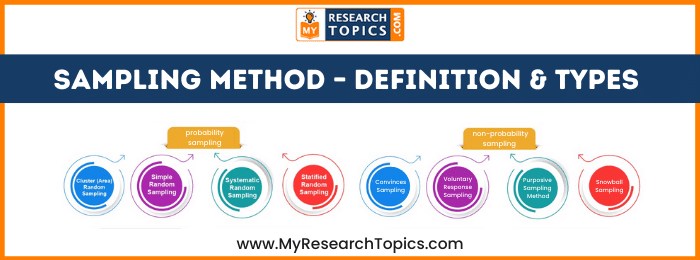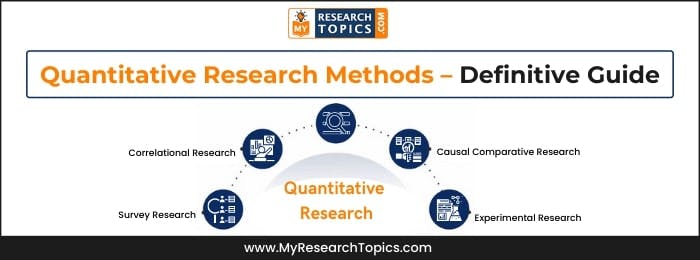Sampling Method in Research – Definition & Types Explained
Published 16 October, 2023

Sampling is the process of selecting a subset from a population, and it’s an important component in research. It can impact the validity, reliability, and generalizability of your data. This article will discuss more about sampling and some of these methods to help you decide which one might be best for your study.
What is Sampling?
Sampling is basically a statistical analysis technique that you can apply for selecting the predetermined number of a sample from a large population having similar characteristics. When you perform the investigation, due to lack of resources and time you would not able to gather information from each and everyone, in such cases you can use the sampling method for selecting participants.
Besides gathering facts from all people individually you can select the sample. The researcher uses the term sample is for a group of people who have select as participants in research.
In simple words, Sampling is the procedure that you can use for selecting a few people from a large population as participants in research.
The goal of sampling is to select parts or groups within the population and study those parts in order to determine information about all of the group as a whole, such as reliability, validity, and accuracy.
Types of sampling methods
The sampling method can be categorized into two, these are:
- Probability Sampling: It is a type of sampling method in which you need to select participants randomly. The probability sampling method enables you to make a statistical assumption about the population.
Probability sampling is a method of selecting random members from an entire population. With probability sampling, all members have the same chance to be selected as part of the sample. - Non-probability Sampling: It involves such types of research where you cannot give the population a chance to get selected as participants in the research.
In non-probability sampling, the researcher chooses members for research at random. This can be difficult because it’s not a fixed or predefined selection process and this may mean that all elements of a population don’t have equal opportunities to participate in your sample.
Uses of both probability and non-probability sampling method
There are multiple uses of both probability and non-probability sampling methods, as follows:
Use of Probability sampling
- You can use a probability sampling method in case when you want to generate an outcome that represents the entire population.
- Probability sampling helps researchers. They plan and create an accurate sample. This will provide well-defined data.
- Using probability sampling to take a sample from a population, the bias is small or nonexistent. The way you select the sample really shows what you think and how you see things. This is why probability sampling leads to good data collection because it has an appropriate representation of the population.
Use of Non-probability sampling
- It is the type of sampling method which is most suitable for performing both qualitative and exploratory investigation.
- Researchers use the non-probability sampling method to create a hypothesis when limited information is available.
- The non-probability method is good when you have limited time and money, and you need to collect some preliminary data.
- The non-probability sampling technique will enable you to gain knowledge about the under-researched population.
See Also: Research Paper Methodology
Types of probability sampling method
The different types of probability sampling methods are:
1. Simple random sampling
It is a type of probability sampling method by using which you can provide all people in the population with a chance to get select as a participant in the research process. While applying this method you need to make sure that the sampling structure which has been chosen covers the entire population.
It’s reliable because every member in the entire group has the same chance to be chosen, and it saves time by not having to ask everyone for their opinion on something just one at a time.
For example, for conducting the investigation, you are planning to select 100 employees out of a thousand workers in a company. You can give random numbers to all thousand employees and by using the random sampling technique can select 100 workers.
2. Systematic sampling
It is a probability sampling method that includes a listing of all people. In a systematic sampling technique, all people are chosen at a regular interval of time.
This type of sampling technique is less time-consuming because it has a predefined range and requires starting point selection, which can be repeated at regular intervals for an accurate representation.
For example, If you want to choose a sample of 100 people out of 1000 employees you can arrange or list them in an alphabetical way. Then from the list of 1000 employees, you can choose every sixth or twelfth person as a participant in the research. Then afterward you can select every fifth person and in this way, you can make the selection of all 100 people.
While making the application of systematic sampling you need to confirm that there is no hidden pattern. For example, if you arrange the database in alphabetical order you are aware of that while performing the sampling.
3. Stratified sampling
You can apply the stratified sampling method where the population involves mixed characteristics and you want to make sure that you have represented each character is equally. In this sampling method, the researcher characterizes the entire population on the basis of different characteristics such as on the basis of demographics, job role, etc.
This process divides the population into smaller groups and then draws samples from each group separately, without having to worry about overlapping members or missing some individuals altogether.
For example, An organization consisting of 500 female and 100 male workers. While selecting a sample you want to make sure that the sample demonstrates gender balance then you can categorize the entire population on the basis of gender. Then after that, you can apply a random sampling technique to every group. After that, you need to select 80 women and 20 men.
4. Cluster sampling
It is a type of sampling technique that mainly includes categorizing the population into subgroups. While applying this technique you need to make sure that every group consists of similar characteristics. The cluster sampling method is suitable when you have to select a sample from a large population.
The biggest disadvantage of this method is that there are high chances of error in the selection of samples. Another major drawback of this method is that you can’t make sure those samples that you have selected using a cluster sampling technique represent the whole population.
For example, you want to conduct an investigation in order to analyze whether employees working in an organization are satisfied with the working environment. Companies, where you want to perform surveys research, consist of 1000 employees.
Kingfisher airlines has 12 branches located in different cities. In such a case, you can not reach each and every employee for collecting information; therefore you can select 5 offices randomly, which is basically is your cluster.
Types of non-Probability sampling method
In non-probability sampling, researchers need to use a non-randomized criterion for selecting the sample. The different types of non-probability sampling methods are:
1. Convinces sampling
In this type of sampling technique, the researcher selects those participants who are easily accessible by an investigator. One of the biggest advantages is that it is less expensive and you can collect information easily. The major drawback of the method is that you can’t make sure that the people whom you have select as participants represent the entire population.
For example, using friends or family as part of a sample is easier than targeting unknown individuals. This is a convenient way to gather data.
2. Voluntary response sampling
The voluntary sampling technique is somewhat like a convenient sampling method, instead of relying on chance or random selection, people actively volunteer themselves for participation in studies and surveys. One biggest drawback of this method is that there are high chances of bias ness.
For example, Suppose you by performing the investigation and collecting information about student support services. You could share the survey questionnaire with all the students at the university and a lot of students decided to complete it. But while applying this technique you will not able to confirm that the response provides by few students represents the perspective of other students.
3. Purposive or Judgemental Sampling Method
You, in order to apply the purposive sampling method, will require utilizing your personal judgment for selecting the sample. Such type of sampling technique researchers mainly utilizes for performing qualitative research. You can also utilize it when you intend to develop an in-depth understanding of a particular situation. You need to set proper criteria and reasons for inclusion in order to make purposive sampling effective.
For example, you want to perform an investigation for analyzing the academic performance of people suffering from a special type of disability. You can purposefully select disabled people for collecting a huge amount of information about their academic performance.
Read Also: Qualitative & Quantitative Research Method Differences
4. Snowball sampling
If the population is hard to access, you can use snowball sampling to get more people. You can utilize this sampling technique for selecting few people as participants with the support of other people. You start with the people you have and then other people will make contact with other people who are in your network.
For example, You are trying to gather information about homeliness people but you don’t have access to the list. Suddenly you met a person who gets ready to act as a participant in the investigation. You can ask him to provide contact detail of other people.
Other Related Guides
- Research Project Questions
- Types of Validity in Research – Explained With Examples
- Schizophrenia Sample Research Paper
- Quantitative Research Methods – Definitive Guide
- Research Paper On Homelessness For College Students
- How to Study for Biology Final Examination
- Textual Analysis in Research / Methods of Analyzing Text
- A Guide to Start Research Process – Introduction, Procedure and Tips
- Research Findings – Objectives , Importance and Techniques
- Topic Sentences in Research Paper – Meaning, Parts, Importance, Procedure and Techniques












